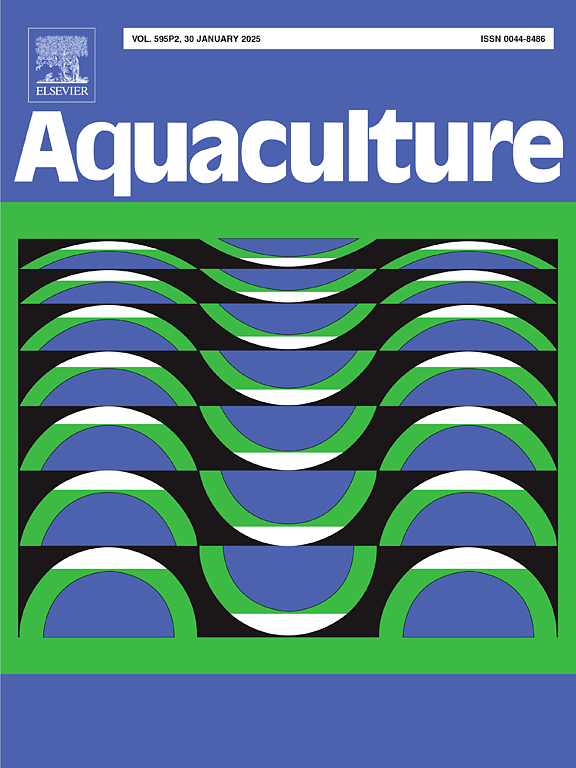Enhancing growth, pigment composition, polysaccharides, fatty and amino acid content in Ulva prolifera by manipulating temperature, light intensity, and photoperiod
IF 3.9
1区 农林科学
Q1 FISHERIES
引用次数: 0
Abstract
Ulva spp., a type of cultivated species of seaweed, are characterized by the high carbon and protein content. In this study, a strain of Ulva prolifera named “"Yonghu 002" was collected and characterized from Xiangshan Bay, Ningbo, Zhejiang Province. Subsequently, its gamates were induced and collected, then the seedlings were obtained by using the "germing clusters" method. Next, the seedlings were cultured under varying temperatures (14, 18, 22, 26, and 30 °C), light intensities (50, 100, 250, 350, 450, and 600 μmol m−2 s−1), and photoperiods (4 h: 20 h, 8 h: 16 h, 12 h: 12 h, 16 h: 8 h, 2 0 h: 4 h, and 24 h: 0 h, L: D), respectively. The growth, total polysaccharides, fatty acids, and amino acids were evaluated. The results indicated that the optimal conditions for the growth and quality of Yonghu 002 were 100 μmol m−2 s−1 with 12 h: 12 h (L: D) at 18 and 22 °C. Under these conditions, the soluble protein content was up to 4.42 mg g−1 FW (Fresh Weight), the total polysaccharide content was as high as 7.09 mg g−1 FW, the ratio of unsaturated fatty acids to saturated fatty acids was approximately 1.80, and the ratio of fresh amino acids to total free amino acids was high. This study lays the groundwork for the land-based cultivation of Ulva spp. and provides a theoretical foundation for their utilization as biological resources.

求助全文
约1分钟内获得全文
求助全文
来源期刊

Aquaculture
农林科学-海洋与淡水生物学
CiteScore
8.60
自引率
17.80%
发文量
1246
审稿时长
56 days
期刊介绍:
Aquaculture is an international journal for the exploration, improvement and management of all freshwater and marine food resources. It publishes novel and innovative research of world-wide interest on farming of aquatic organisms, which includes finfish, mollusks, crustaceans and aquatic plants for human consumption. Research on ornamentals is not a focus of the Journal. Aquaculture only publishes papers with a clear relevance to improving aquaculture practices or a potential application.
 求助内容:
求助内容: 应助结果提醒方式:
应助结果提醒方式:


